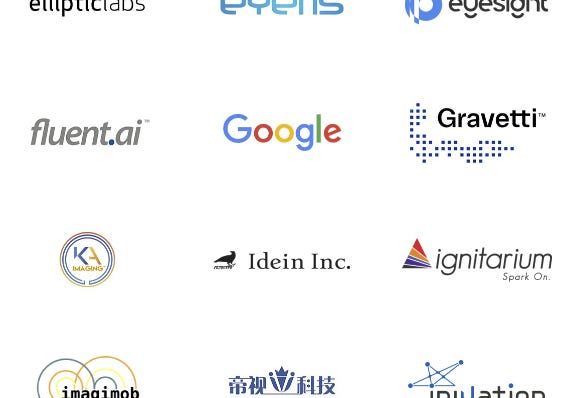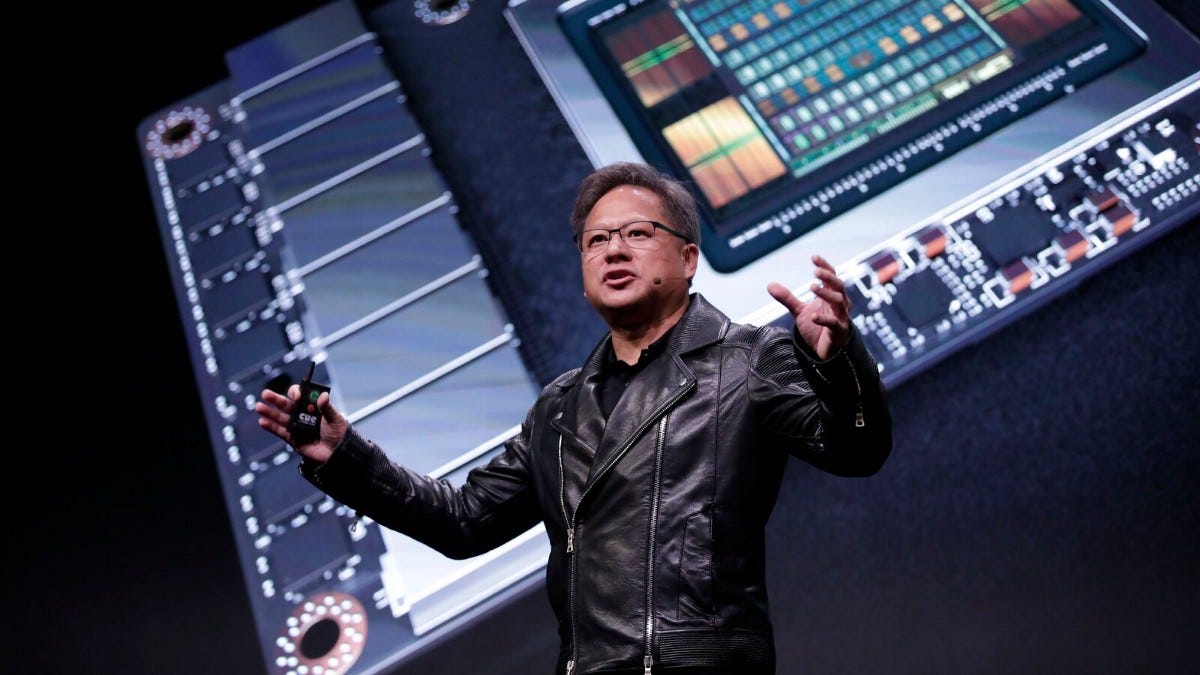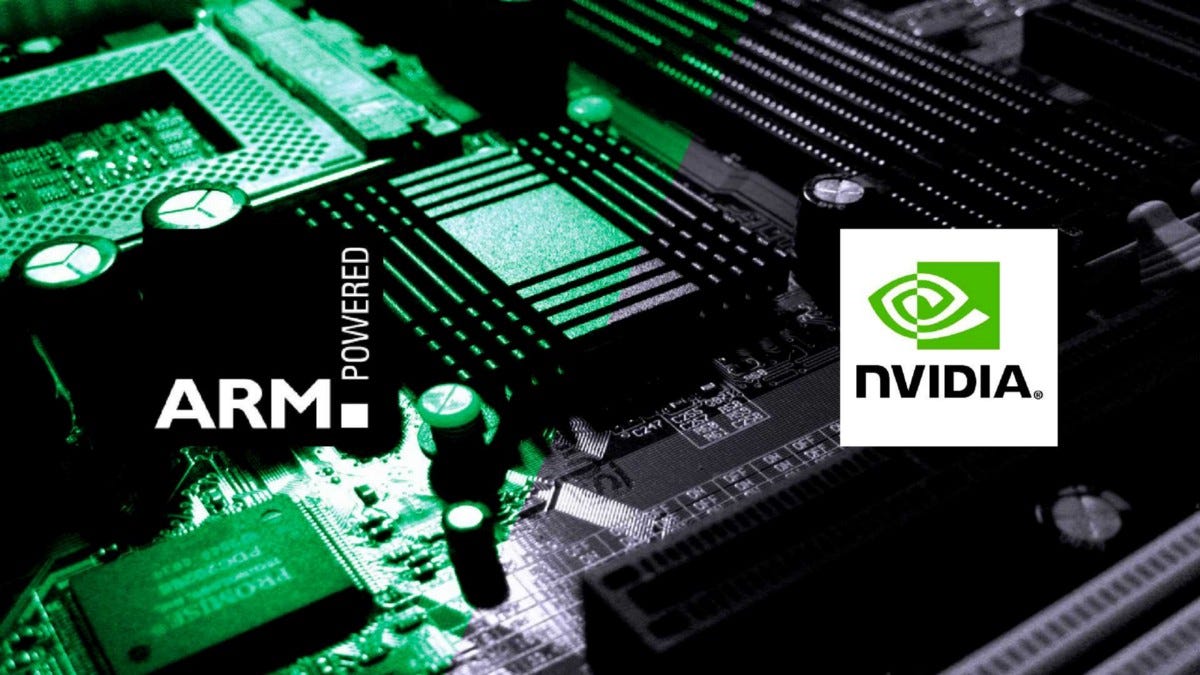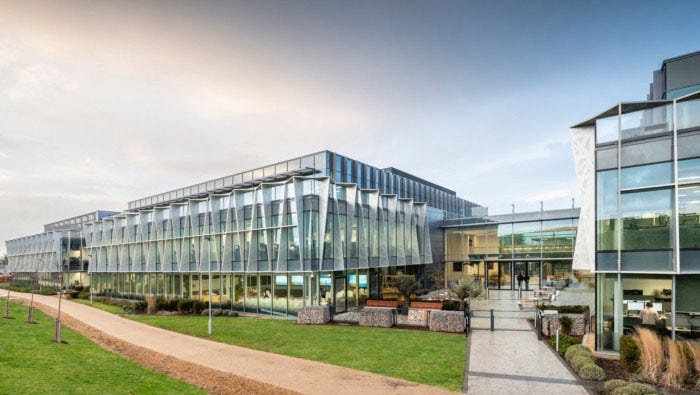Arm: Apple and NVIDIA
About Arm, the latest in Apple’s Arm relationship, NVIDIA’s Arm acquisition and thoughts about what’s going to happen next.
This is a long one, use these as a heading select:
- What is ‘Arm’ exactly?
- Okay, but why should I care?
- Fair play. So what’s going on?
- Apple’s Arm Macs
- NVIDIA acquisition
- Interesting, what does this mean?

What is ‘Arm’ exactly?
‘Arm’ is a few things. It’s a company, a brand and an architecture. The company, Arm Holdings is a British founded semiconductor and software design company acquired by SoftBank in 2016. The brand is primarily the logo you see above, known as a technology brand that provides the computational instruction set used in a range of System-on-Chip (SoC) devices, microcomputers, embedded devices, smartphones and servers. The acronym stands for ‘Advanced RISC Machine.’ RISC stands for ‘reduced instruction set computer.’ We’ll get into what that means in a bit.
Arm is easily one of the most successful brands that most people haven’t heard of. It predominantly has a good reputation among developers and executives. This is because instead of designing and selling chips themselves, like competitors, Intel, NVIDIA or AMD, they design the CPU (central processing unit) and sell the designs on. This way most companies, even ones that could be considered competitors, are happy to deal with them. They then take the design and fill in the gaps to make their own SoC.
The architecture is the product. Their architecture exposes an instruction set and workflow for software developers to build software that can run on devices with Arm chips. Effectively an architecture is a contract between hardware and software describing what the software can rely on the hardware to do.

Light details and comparison*
When you get down to the details Arm chips require fewer transistors than a complex instruction set computing architecture (CISC) processor (like the x86 processors from Intel or AMD). Across the billions of chips that they make this improves cost, power consumption, and heat dissipation. Which is part of what makes so popular for embedded systems or supercomputers.
On a design level, this comes from RISC-based machines executing one instruction per clock cycle. Whereas CISC machines have special instructions that can take more than one cycle to execute. This means the same instruction executed on a CISC architecture can take several cycles on a RISC machine. For this, RISC architectures need more RAM to load each instruction, act on it and then load the next. The CISC architecture can execute one more complex instruction that does the same operation in one go.
This translates to a difference in values for RISC vs CISC efficiency. While RISC prioritises efficiency in cycles per instruction, CISC prioritises efficiency in instructions per program. Processing speed depends on the time taken to execute a clock cycle, how many cycles it takes to execute a given instruction, and the number of instructions in each program. RISC has an emphasis on larger program code sizes.
RISC advantages:
- Power consumption: The highest performance ARM-based mobile chip consumes less than four watts, oftentimes much less. It doesn’t try to create 130W processors, not even 60W or 20W. The company is only interested in designing low-power processors.
- Opinionated design for minimalism: ARM continues to increase the performance of its processors not by stretching the empower budget or the number of transistors on a chip but by improving the design.
- Predictability: RISC architectures may require more RAM but always executes one instruction per clock cycle making for predictable processing
Out of this sprung numerous architecture designs that do certain things well in specific ways while staying within their own ‘power budget’ constraints. As opposed to doing lots of things on one chip. Arm designs pack CPUs together so they can compensate for each other and result in an overall more efficient SoC. This is referred to as a ‘big.LITTLE’ design.
Simplistically the ‘big’ processor provides maximum performance while the ‘LITTLE’ processor provides maximum power efficiency. Which brings us to the software. These big.LITTLE designs use a specific kernel scheduler which talks to the operating system (OS) and decides where, or on which CPU, work should be done. So more demanding tasks like browsing or gaming and less demanding tasks like email or texting can alternate processors for maximum efficiency.
You can read more about the gory details of all the different profiles, chips and smarts they use to keep the power consumption down and simplicity up in various places, this is as far as I’ll go into architectural details here. It's turning into a lesson and not a story.

Okay, but why should I care?
Arm, the company, owns the architecture instruction sets and designs components of processors for others to build. They then license the architectures and designs to other companies and partner with them so they can build on the designs and fabricate their own chips. In this way, Arm is able to situate itself as a key partner to hundreds of companies at the base of their product, at the silicon level. Companies like NVIDIA, Intel, Qualcomm, Apple, Microsoft, Amazon, IBM, Nintendo, Raspberry Pi and on and on.
This means they are able to interact with their partner’s customers all the way up the stack. They have ‘partner-ecosystems’ spanning horizontals; OEMs, SIs, hardware vendors, software vendors and service providers, as well as verticals; AI, automotive, mobile technologies, infrastructure, security and on. As such, their designs live in billions upon billions of devices.
They are able to permeate the stack so much because they are in the background, they are uncompetitive. They sell licenses to the hardest part of chip design and then help out with the rest. They’re neutral. Neutrality sets a more even playing field for new businesses and competitors. It means support for users and developers, and it means partners can benefit universally from Arm’s success without worrying about competition. That is a healthy position for a company valued at upwards of 40 billion dollars.

Fair play. So what’s going on?
Two big things are happening. Apple has built Arm-based workstations [1], and NVIDIA is trying to acquire Arm for 40 billion dollars [2].
Apple’s Arm Macs
On the 10th of November 2020, Apple announced their first Mac workstations utilising their own Arm-based silicon instead of their previous Intel silicon (though Arm didn’t get a mention). This move was announced on the 22nd of June this year. They have used Arm in their iPhones, iPads and watches for years as what they call Apple silicon.
“From the beginning, the Mac has always embraced big changes to stay at the forefront of personal computing. Today we’re announcing our transition to Apple silicon, making this a historic day for the Mac,” said Tim Cook, Apple’s CEO. “With its powerful features and industry-leading performance, Apple silicon will make the Mac stronger and more capable than ever. I’ve never been more excited about the future of the Mac.”
This was not a secret or surprise for die-hard Apple fans, they had been talking about it for years. In fact, most were behind in their predictions.

Why?
Apple is taking ownership of the Macs entire manufacturing process. Paying Arm for licensing means Apple effectively owns its processor, and while they will surely save money in the long run not paying Intel for their processors, they also get the advantage of being able to develop their hardware and software on their own terms, on their own cadence.
Then there’s the case that Arm is catching up with x86. Some studies are showing that in a fight out between the iPad Pro and Macbook Air, Arm comes out on top. There are also lots of rumours buzzing around about dissatisfaction with Intel. Buggy chips and bad QA. Now, these points are entirely speculative, I haven’t looked into the rumours or benchmarked Apple products, but you don’t have to look far to find somewhere to dig that particular hole. Maybe another time.
Why not?
The biggest issue for Apple is the ‘app gap’. Because Intel has been the go-to for PCs and workstations for so long most software is designed to run on x86 Intel hardware. There are considerably fewer applications built for Arm.
One solution is virtualisation, the issue is it takes more resources, but it wouldn’t be forever. Apple is going to try and port apps to the new architecture as fast as they can. And if companies don’t start transitioning too they risk losing the Mac audience or their competitors beating them to it.
To fuel this Apple announced ‘the Universal App Quick Start Program’ to provide docs, support, beta versions and use of a limited number of Developer Transition Kits for developers to start porting their apps to Apple Silicon.
Apple has had something like this on their minds for a while. Their ‘Project Catalyst’ was supposed to make their apps universally accessible across Apple products. To allow users to purchase an app once and then be able to access it across the Apple device family. However, the project was aimed at making iPad and iPhone apps available on Macs. I.e porting Arm applications to x86, not the other way around. I wonder what changed.

NVIDIA acquisition
On September 13th 2020 NVIDIA and SoftBank Group Corp (the owners of Arm Holdings since 2016) announced an agreement under which NVIDIA will acquire Arm Holdings for $40 billion. NVIDIA has used the Arm architectures for years, in various IoT/embedded products, and last year, with the deal in mind, committed to making their full-stack AI and HPC (high-performance computing) software available on Arm by this year.
“We’ve been working on this for the last two years, porting our platform and compiling it over, testing it out. We’re almost there, and for us, it really wasn’t a question of if, but when,” said Ian Buck, general manager and vice president of accelerated computing at NVIDIA last year.

Why?
As discussed, Arm can be found just about everywhere, NVIDIA wants to be everywhere, now that can happen. Either NVIDIA can adapt their technology to be more compatible with existing Arm architectures in the wild (unlikely) or from acquisition onwards everything Arm produces will have NVIDIA capabilities. In theory, the two companies match well. Simon Segars, CEO of Arm said:
‘Arm and NVIDIA share a vision and passion that ubiquitous, energy-efficient computing will help address the world’s (…) issues (…) Delivering on this vision requires new approaches to hardware and software and a long-term commitment to research and development. By bringing together the technical strengths of our two companies we can accelerate our progress and create new solutions.’
And it seems they mean it. It is said that Arm will continue to operate with its ‘open-licensing’ business model that has enabled it to gain such a foothold in the market. But whether NVIDIA will try and muscle its way into the model is yet to be seen. Joining Arm in open-licensing NVIDIA will have a chance to get their technology in the hands of anyone who wants it. Closing the model or imposing NVIDIA technology on developers will damage Arm’s reputation and could effectively give NVIDIA a monopoly on AI R&D.
NVIDIA is not the world leader in AI. A Chinese company called Cambricon Technologies is. They have hundreds more patents than NVIDIA and have had plans to set up ‘the world’s primary innovation center’ for years. They seem to be NVIDIA’s rival in every way and it feels like NVIDIA wants to catch up.
Acquiring Arm expands NVIDIA’s IP portfolio while adding ranks of the best engineers in the world to R&D. And NVIDIA plans to remain headquartered in Cambridge in the UK. An already world-class city that NVIDIA plans to expand to ‘build a world-class AI research facility’. Matching Cambricon Technologies on their aspirations.
The other major advantage is in the data centre. In servers. Once again NVIDIA is not new to the datacentre, they’ve been making billions of dollars of annual revenue for years. But Arm brings with it the potential to vastly increase energy efficiency and price performance.
“I’m super excited to focus a lot of energy around turning Arm into a world class data center CPU,” said NVIDIA CEO Jensen Huang.

With Arm CPUs NVIDIA is a full-stack data centre company. Its famously winning the GPU game, they design DGX servers and EGX edge hardware and they can sell all that and the software to operate them to their customers. With Arm the processors on that hardware are NVIDIA owned and they become a one stop shop for all your up-front data-centre costs. The only thing they don’t cover is long term support and maintenance.
So we get an NVIDIA based cloud with all the benefits of Arms ecosystem and application-specific designs. There’s already evidence of this working. Amazon’s Graviton2 instance types run on Arm based hardware for ‘increased performance at a lower cost’ and the world’s fastest super computer is currently ARM based (Sep 2020).

Why not?
My concerns are other sides of the same coins as above. First, with Arm, NVIDIA has the opportunity to become the world’s monopoly supplier of microprocessors. Especially while their biggest competitor sells exclusively in Asian markets they have the opportunity to dominate the western world. And it is set to happen unless Arm stays true to its open business model and NVIDIA doesn’t become anti-competitive, replacing Arm’s mode with their own and closing off the market. Our last hope then becomes RISC-V which NVIDIA has a stake in anyway.
Second, as I said at the beginning of this article, Arm is easily one of the most successful brands that most people haven’t heard of. And it is certainly one of the most successful British founded and based companies ever. As long as NVIDIA follow up on their promises to support the UK's technology economy and fuel growth in Cambridge there isn’t a lot to worry about. But giant companies (regardless of where they’re from) having such an outrageous amount of influence in another company is always concerning.
And last and a little bit of the least concern is that while Arm’s more ‘application-specific’ approach to chip design has a lot of benefits, it also requires bespoke software. That means a considerable commitment from NVIDIA-Arm customers, which means vendor lock-in, which means unsuspecting organisations have to tie their fate to NVIDIA-Arm software maintainers and depend on their continuing to put these kinds of customers first.

Interesting, what does this mean?
Well, to conclude, for Apple it means considerable savings on processor costs only having to pay their long time partner Arm, and that Apple fans can likely expect an app ecosystem that can span all of their Apple products courtesy of Arm. For NVIDIA it means energy efficiency and price-performance across their already stack-spanning product range. And for Arm, it means they are entirely at Nvidia’s mercy but on their current trajectory there is a nice path to even greater success for the world’s friendlies Silicon company.

